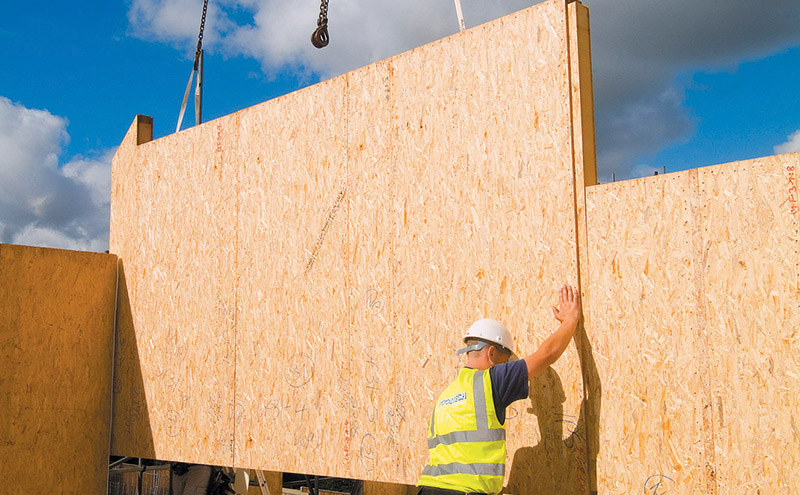
By Matthew Evans, technical manager Kingspan TEK
ONE of the most important aspects of any new build today is to get the energy efficiency of the building envelope right. There are several different ways that this can be achieved, but there is a proven approach that is particularly effective, and that is to follow the principles that underpin the Passivhaus standard.
These principles include three fundamental elements: high levels of insulation, very low levels of air leakage, and ventilation with heat recovery. Couple this with good design that takes into account the attributes of the plot to manage solar gain, and you will have a building that requires virtually no energy to heat.
Since its founding back in the early 1990s, the Passivhaus Standard has consistently shown the true potential of a fabric-first construction approach, leading to the creation of highly energy efficient properties which do not rely on expensive renewable technologies. Imagine a home that maintains a constant internal temperature, whatever the weather, with only a heated towel rail needed to provide the occasional boost.
One of the criteria for achieving Passivhaus standard is that the building must not use more than 15 kW.h/m2/year for heating. This is why insulation and air-tightness are so crucial. Each construction element must have a U-value lower than 0.15 W/m2.K, so the choice of insulation plays a major role, and careful attention also needs to be paid to the reduction of thermal bridging.
These demands placed by the Standard on building envelope performance could make it challenging and costly to achieve with a traditional brick and block approach. Structural Insulated Panels (SIPs) offer a well-established alternative, providing inherently excellent fabric performance and airtightness, with a simple, streamlined construction programme. Even more importantly, SIPs make it possible to build to this kind of standard without the need for excessively thick walls, and with complete design flexibility, whether your tastes run to the ultra-modern or a more traditional appearance.
An example of a typical SIP construction would be two OSB3 (Oriented Strand Board) facings with a rigid thermoset insulation core. The demanding thermal performance requirements of the Passivhaus standard can then be easily met with the addition of an insulated lining. As well as providing excellent levels of insulation, the jointing arrangements inherent in SIPs can provide extremely airtight structures, with air-leakage rates as good as 1m3/hour/m2 at 50 Pa. Once airtight tape is applied to junctions, this rate can be reduced even further to the 0.6 air changes per hour @ 50 Pa required by the Passivhaus standard.
SIPs can also help to avoid problems which may be associated with other common construction techniques such as air-leakage through poorly sealed sockets or switches, at floor zones through masonry cavity walls, under skirting boards and through poorly sealed loft hatches and top storey ceiling light fittings.
The demanding airtightness requirements of the Passivhaus approach makes mechanical ventilation essential in order to maintain a constant flow of fresh air within a property. MVHR units use the heat from outgoing stale air to warm incoming fresh air, further reducing the property’s heating demand and creating a fresh and comfortable indoor environment. The jointing arrangements in SIPs mean that the insulation layer is typically interrupted by less repeating studwork than in a timber frame, greatly reducing repeating thermal bridging, and their factory engineered design ensures very low levels of linear thermal bridging at junctions and openings.
Once onsite, SIPs can usually be fitted with virtually no adjustments, providing a highly predictable, dry build programme which can typically be completed within a matter of weeks. Once the shell of the building is erected and a breather membrane is applied to the outer face of the SIPs, the property is weather tight and internal fit out work can begin, reducing programme length and costs.
Building to Passivhaus standards would help to create a building stock that is inexpensive and efficient to run, that is part of the solution for issues such as carbon emissions and energy security, and that is future-proof. SIPs can make it simpler to achieve this, or at least to put the principles in action.











